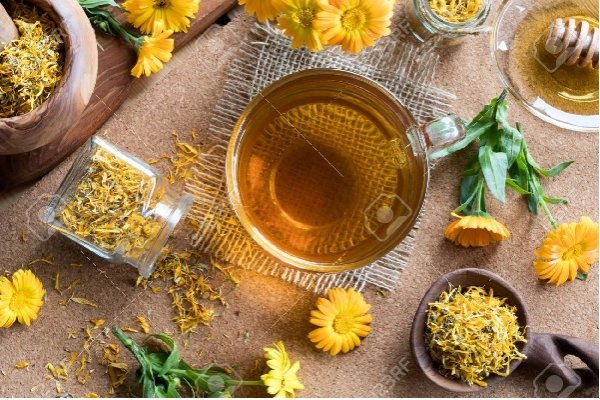Marigold
in case you wanna colab with albanian translation, please contact me at info@flekitza.com

Everything you have to know about Marigold
Marigold (Calendula officinalis) is a hardy plant with bright orange flowers. An interesting fact is that marigold flowers are opened and in full bloom during the day, while they are closed at night and during rainy and cloudy weather.
In popularly is known as "herald of rain" because if marigold flowers did not open in the morning it meant there would be rain in the afternoon.
The healing properties of marigold
In the past marigold flowers and leaves were used fresh or dried for the preparation of medicinal remedies or wraps.
Today we also find marigold in ointments, crèmes, oils and gels.
The most widespread use of calendula is in dermatology.
Healing effects of marigold:
- has anti-inflammatory and antibacterial properties promotes wound healing
- Used for burns, stabs, sprains and swelling
- Successful in fighting liver, kidney and urinary tract problems, used in the treatment of herpes virus and hepatitis
- in the treatment of diarrhea, inflammation of the intestines, abdominal cramps and constipation
- also helps with menstrual cramps
- tea is great for treating viral and bacterial urinary infections
- cream is known in the treatment of cracked lips, bruises and varicose veins, as well as for the treatment of hemorrhoids
Cultivating and harvesting marigold Marigold
Seeds are sown in early spring because marigold stems and leaves are resistant to frost and cold. Seeds germinate after four to five days and the plant itself grows rapidly. The first flowers can be expected about forty days after sowing.
Depending on planting, marigold can blossom from May until late fall or until the onset of heavy frosts. The best time to pick marigold is in August because then the flowers reach their highest quality and flowering is the most abundant.
Marigold flowers should be carefully dried in a thin layer, in the shaded and airy place, because that way flowers will retain their natural color.
Tea against menstrual problems
Marigold tea is extremely effective for relieving painful menstruation and for regulating improper and irregular menstrual cycles.
It must be consumed seven days before the start of menstruation. You should continue to drink it through the cycle, until the monthly bleeding stops.
Preparation:
Pour 0.2 liters of boiling water over one or two marigold flowers.
The tea can be sweetened with honey if desired and it should be taken two to three cups a day.
Marigold bath
A famous treatment method from the past is a bath containing many healing herbs. Our ancestors used marigold baths and they are still in use today because they are very effective in the treatment of hemorrhoids, vaginal infections, genital herpes, bladder infections and many other ailments.
Tips for preparing marigold bath
Pour cold water over one to two cups of fresh or dried marigold flowers and let it sit for a day.
After that boil the mixture and add it to a warm bath.
Fresh marigold juice
You can use fresh or dried marigold flowers and stems to prepare marigold juice. Wash the ingredients (both flowers and stems) and mix them in a juicer or a blender.
This juice is pretty strong, so you can dilute it with apple or carrot juice.
Marigold cream
Finely chop fresh marigold flowers and mix them with coconut oil.
Heat the mixture a bit and then let it cool.
If the cream is too thick, you can dilute it by adding another base oil.
This cream is useful for the treatment of varicose veins, skin infections, eczema, athletic feet, and many other ailments.
